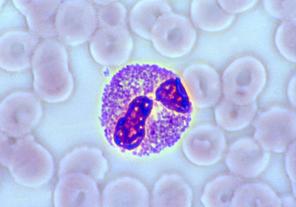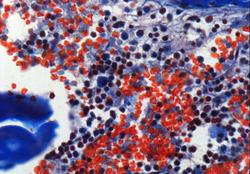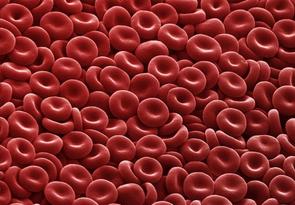What is Haematology
|
Haematology is a study of blood, and when it is deranged, it can cause many disorder or disease which can be broadly grouped into two categories, benign and malignant haematology.
Benign disorders (implies a good outcome or reversible condition) such as iron deficiency anaemia or vitamin K deficient bleeding problem or coagulopathy. They are far more prevalent in the community than malignant diseases such as lymphoma or leukaemia (ie lymph gland cancer or blood cancer respectively). Malignancy or cancer are increasingly common due to our ageing population, this is partly due to increase chances of genetic changes or mutations. There is also a component of environmental influence such as life style choices of smoking and alcohol. Once cancer develops or becomes well established, it is difficult to achieve control and or reverse without toxic treatments eg chemotherapy/cytotoxic/immunotherapy and or radiotherapy. Long term outcome is usually dismal and often reduce survival. Clotting disorder is often overlooked, especially thrombosis, such as DVT (deep vein thrombosis) will also impact on quality of life; and the converse ie bleeding problem such as von Willebrand’s disorder (VWD) usually manifest as heavy period or menorrhagia in women of child-bearing age, this can be neglected and ultimately a delay in diagnosis; with consequences, such as iron deficient anaemia, and bleeding excessively after child-birth (ie post-partum haemorrhage). It is also a risk factor of bleeding during or after surgery. With respect to surgery, thrombosis can be a potential risk after major surgery. Other risk factors of thrombosis are cancer, long distance travel or immobility. We should also take into account the familial nature of both bleeding and thrombosis, but it is much less common to have hereditary cancers. A haematology specialist deals with both benign and malignant blood disorders, and from management perspective, we divide them generally into two distinct groups : primary which is arising from blood or bone marrow itself; whilst secondary is reacting to other problem such as infection or other non-blood related cancer, eg liver, kidney, thyroid or other solid cancers. |
Haemotpoiesis and BOne Marrow Biopsy
Haematopoiesis refers to production of blood in bone marrow (ie our factory) and a bone marrow biopsy is an invasive procedure where we collect samples from here for different investigations or tests, including simple microscopy, cytogenetic analysis and molecular testing etc.
As with most of invasive procedures, it has risks or potential side effects such as pain, neuralgia, bleeding, bruising, infection and even rarely perforation of bowel or death. This is performed under local anaesthetics or sedation, very rarely general anaesthetic may be needed.
To undertake this, a discussion is needed, the benefits should outweigh risks of the procedure, it should provide a definitive diagnosis or impact on management of the presenting problem.
As with most of invasive procedures, it has risks or potential side effects such as pain, neuralgia, bleeding, bruising, infection and even rarely perforation of bowel or death. This is performed under local anaesthetics or sedation, very rarely general anaesthetic may be needed.
To undertake this, a discussion is needed, the benefits should outweigh risks of the procedure, it should provide a definitive diagnosis or impact on management of the presenting problem.
LEARN MORE ON...
1. HAEMOSTATS |
2. THROMBOSIS AND RELATED PROBLEM |
3. RED BLOOD CELL |
Contact Us
(Practice is open on Wednesday only)
You can also request an appointment on line by completing and submitting this form.
You can also request an appointment on line by completing and submitting this form.






